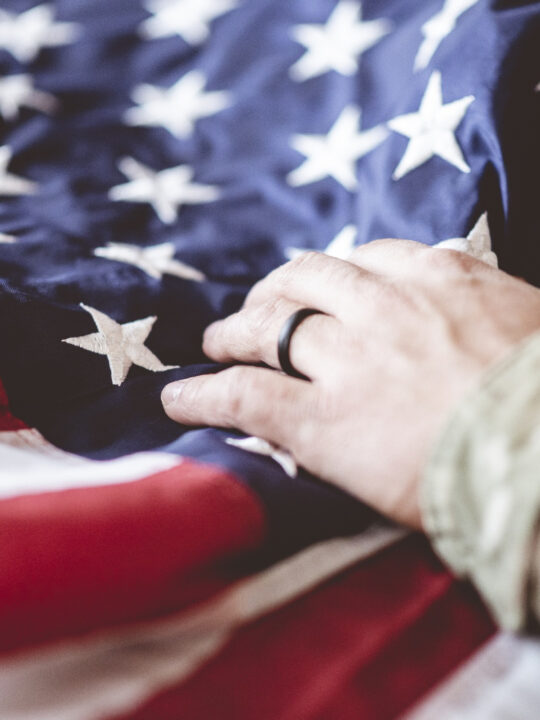In the first half of 2022, over 3,400 people died in the U.S. after getting hit by a vehicle. That’s 5% higher than the number of pedestrians struck and killed in the first half of 2021. Indeed, such fatalities in the United States have risen over the past 40 years.
While not all pedestrians involved in traffic incidents die, many still sustain injuries. The injuries are also often severe enough to warrant emergency department visits. In 2020, 104,000 ED visits involved non-fatal crash-related injury treatment for pedestrians.
All that makes roadway and crosswalk safety paramount to pedestrians.
To that end, we created this guide listing pedestrian safety facts and tips. Read on to discover how to stay safe while crossing and walking along roads.
Table of Contents
- 1 1. Understand Pedestrian Rights and Obligations at Crosswalks
- 2 2. Check for Road and Street Signs
- 3 3. Obey Crosswalk and Road Signals
- 4 4. Walk on Sidewalks Whenever Possible
- 5 5. Walk Facing Traffic
- 6 6. Check All Directions Before Crossing
- 7 7. Avoid Dark Roads and Streets
- 8 8. Mind Your Clothing
- 9 9. Refrain From Walking After Drinking Alcohol
- 10 10. Pay Attention to Your Surroundings
- 11 Always Follow These Crosswalk Safety Tips
1. Understand Pedestrian Rights and Obligations at Crosswalks
A crosswalk is a designated space on roads and streets for the exclusive use of pedestrians. That makes it the safest place for pedestrians to cross. However, it doesn’t mean people who use crosswalks always have the right of way.
When Pedestrians Have the Right of Way
Pedestrians have the right of way if they’re already crossing at a crosswalk. This means they’re already within the road, inside the crosswalk’s vicinity. In this case, motorists and motorcyclists must yield.
When Pedestrians Don’t Have the Right of Way
Drivers and riders have the right of way if pedestrians aren’t in the crosswalk yet. Thus, they aren’t legally required to stop to let pedestrians on the curb at a crosswalk cross.
In the scenario above, you, as a pedestrian, must yield to motorists and motorcyclists. If you don’t, you risk getting hit and being entirely or partially at fault for the incident. If that happens, you may get served by an auto or motorcycle accident lawyer.
2. Check for Road and Street Signs
One of the most crucial road safety rules for all pedestrians is to check road and street signs. For starters, many roads prohibit pedestrians themselves. Others don’t allow them to cross.
Let’s start with the “NO PEDESTRIAN” signs.
You can find “NO PEDESTRIAN” signs on sidewalks and roadways near construction work. They’re also common in areas with heavy traffic that lack sidewalks. Some places designated for material loading and unloading also often use them.
Another sign to look out for is “NO CROSSING.” This regulatory sign prohibits people from crossing the road or street. You can find them in areas with heavy traffic lacking crosswalks.
Please abide by these regulatory signs because failing to do so can put you in harm’s way.
For example, suppose you enter a roadway with a “NO PEDESTRIAN” sign. If that area is under construction, you could sustain injuries from falling debris. You may even get hit by vehicles or crushed by heavy machines.
Even worse, you may be unable to get compensation from an accident claim or the party that injured you. That’s because you didn’t follow the “NO PEDESTRIAN” sign. Since you disobeyed the regulation, the court may find you at fault.
3. Obey Crosswalk and Road Signals
As a pedestrian, you also have signals to follow, including “WALK” and “DON’T WALK.” You can find these in many crosswalks, especially those in intersections.
The “WALK” signal can either show the word “WALK” itself or an image of a person walking in white. This lights up when it’s legal for pedestrians to start crossing.
The “DON’T WALK” signal can also be in words. Sometimes, it can be an image of a raised hand in red. When this lights up and flashes, it’s illegal for pedestrians to cross the street.
On many roads with traffic signals, pedestrians must push the button for WALK signals. Doing so prompts the WALK signal to turn on. Since you can’t legally cross the street unless this signal light is on, please press the button if it’s there.
At crosswalks without pedestrian signals, pedestrians must use road signals for vehicles. So if the red light is on, pedestrians can cross since this signal means vehicles must stop. But if the green light is on, pedestrians must not cross the street as this signal allows cars to move.
4. Walk on Sidewalks Whenever Possible
Whenever available, walk on sidewalks, the areas separated from the roadway. They are there to accommodate pedestrians, after all. They’re also among your safest walkway options because no motor vehicle can use them.
5. Walk Facing Traffic
If you’re in an area without a sidewalk but allows pedestrians, walk on the left side of the road. This enables you to face oncoming traffic and motorists and motorcyclists to see you.
Also, walk on the leftmost side of the road facing oncoming traffic. This helps you stay as far away from traffic as possible.
6. Check All Directions Before Crossing
Always look in all directions before crossing a street. This means looking back, front, right, left, then right again. This is especially crucial if you’re at an intersection; cars can come from all directions.
7. Avoid Dark Roads and Streets
As per the most recent federal data, most pedestrian traffic deaths in 2020 occurred in the dark. It showed that over 3 in 4 fatal incidents happened during conditions with dark lighting.
As a pedestrian, you should never assume that motorists can see you during the day, much less at night. So, avoid using and crossing roadways without adequate lighting as much as possible.
8. Mind Your Clothing
If you must walk at night, wear light-colored clothing.
Another tip is to use clothes made of or have reflective material. For instance, you can go for yellow or red retroreflective clothing. These fluorescent colors can help make you more detectable and visible in the dark.
Make it a habit to bring and use a flashlight or a portable lamp when walking at night, too. This can help motorists and motorcyclists see you from afar.
9. Refrain From Walking After Drinking Alcohol
Drinking one bottle of beer containing 5% alcohol can give you a blood alcohol content (BAC) of 0.016% to 0.038%. This depends on your weight; the lighter you are, the higher your BAC can get. It also increases as you drink more alcoholic beverages within an hour.
The issue is that a BAC of 0.02% can already cause a slight loss of judgment. Then, at 0.05%, which you can get after two drinks in under an hour, you may already feel uninhibited. Your alertness and judgment may also be lower.
If you let your BAC go to 0.08%, you’ll likely experience impaired muscle coordination. Your ability to reason, make sound judgments, and detect danger will also drop.
That said, even a single beer can already put you at risk of getting hit by a car while walking on the street.
For instance, if you’re drunk, you may misjudge an oncoming vehicle’s distance and speed. As a result, you continue crossing the street, only to get hit because of your misjudgment.
Another example is how alcohol can make pedestrians oblivious to traffic conditions. For instance, drunk pedestrians may fail to see or understand crosswalk signals. The alcohol in their system can cause this by impairing their cognitive skills.
There’s also the uninhibition that alcohol consumption can cause.
Lowered inhibition can make a person feel “all mighty” and take risks. In this case, a drunk pedestrian may cross the street, incorrectly thinking they have the right of way. A car may then hit that person, especially if they suddenly appear.
So, if you are going to drink, please avoid walking home in a drunken stupor. Instead, ask someone you trust who didn’t drink to drive you home.
10. Pay Attention to Your Surroundings
Pay attention to your surroundings when walking on streets, roads, crosswalks, or sidewalks. This means not browsing the internet, texting, or talking to someone on your phone. You should also pull out your earbuds or headphones and refrain from listening to music.
It’s also best to wait for the all-clear before crossing roadways, even at crosswalks. Just because the car in front of you stopped to let you pass doesn’t mean the vehicle next to them will. Your best bet is to confirm that you can safely pass all other lanes before crossing.
Once you’re within the road, cross as quickly as possible. Don’t dawdle, especially not if you’re with other pedestrians. If you suddenly stop, the person behind you may crash into you.
A person bumping into you may not injure you, but this can cause a holdup at the crosswalk. That can obstruct traffic, and you never know if there’s a driver out there with a propensity for road rage.
Always Follow These Crosswalk Safety Tips
Remember: Pedestrians are far more likely to get injured or die in a crash than drivers or passengers. After all, they don’t have anything protecting them, unlike the latter.
So if you’re more of a pedestrian than a driver, always practice roadway and crosswalk safety. Also, don’t forget that, as a road user, you must obey all the rules, especially at crosswalks.
Did you enjoy reading this article? If so, we have more educational reads to share, so check out our other recent articles now!







